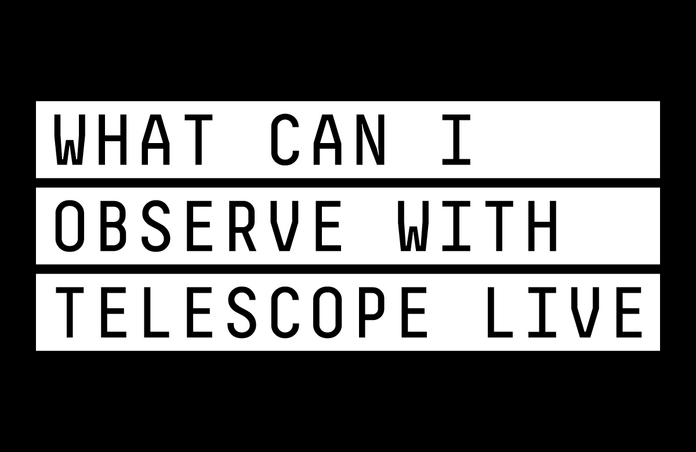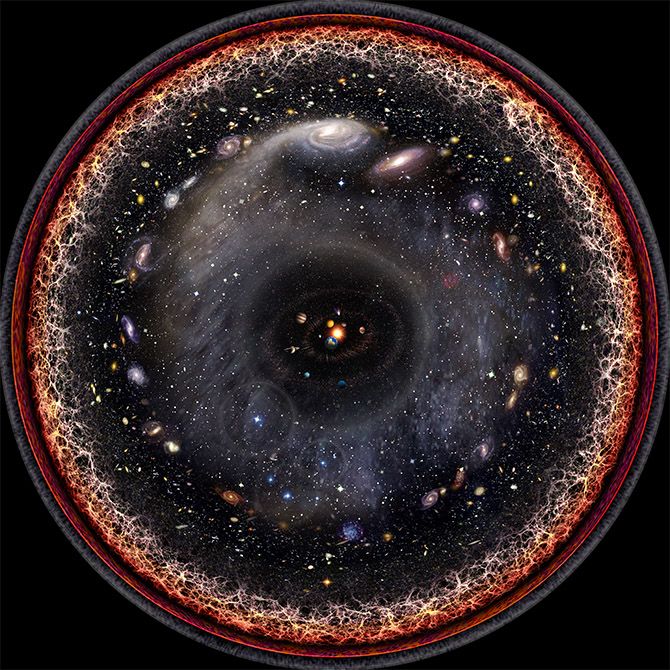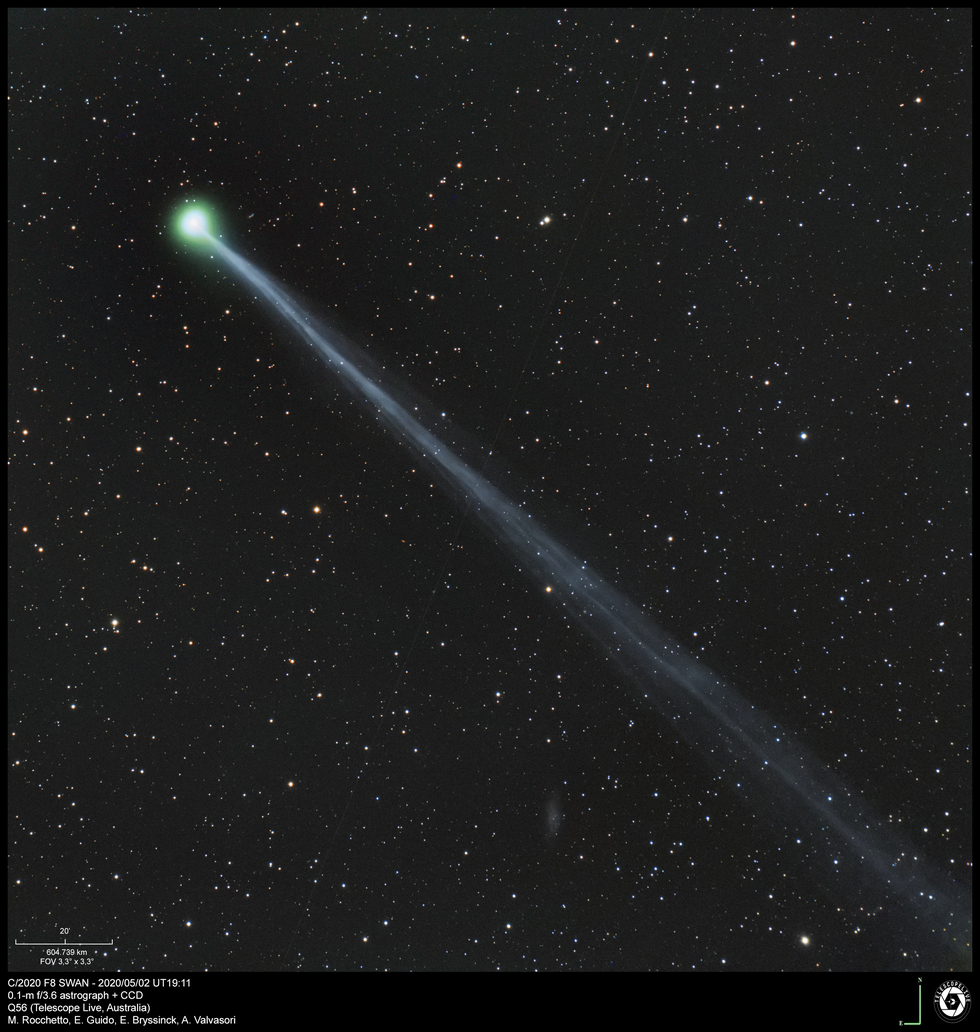What can I observe with Telescope Live?

The Universe is vast. Really vast. Just in the part that we can actually see from Earth, the observable Universe, there are more than 2 trillion galaxies, each containing billions of stars. Just in our own galaxy the Milky Way, there are thousands of star clusters and nebulae. So, where will your next observation bring you?

First, let’s emphasize what objects you cannot observe. The Sun, the Moon and planets aren’t ideal targets for observation with Telescope Live. For the Sun, special filters are required (don’t forget the rule: never stare into the Sun), which aren’t available on any of the 8 telescopes. The Moon and our Solar System’s planets are too close to obtain a full picture and they are also extremely bright compared to other targets, so get your binoculars out and you’ll be able to see a reasonable amount of detail! On the other hand, exoplanets, planets outside our Solar System, are too tiny and dim to be observed. As mentioned in “How does a Star die”, you also won’t be able to image a neutron star or a black hole, as they tend to be observed in non-visible wavelength and with multiple telescopes at once.

To image asteroids or comets, you can use this website to find the coordinates of the object. You can change your location to that of the telescope you wish to use and then simply select an asteroid or comet’s name from the drop-down list. This is a bit more technical since these bodies move so quickly with respect to Earth, but once you’re familiar with the Telescope Live platform you’ll be able master this too!
Anyway, the most popular targets remain Deep-Sky bodies, as they allow for the coloured images of galaxies and nebula everyone associates astronomy with. You can check out the article on those here and it will also give you a short list of nice, popular objects to image. Once you enter the nebula, galaxy or cluster’s name, the platform will recall it and automatically display the coordinates. If the common name, like Helix Nebula or Cigar Galaxy, doesn’t get recognized you can use the Messier (M followed by a number) or the New General Catalogue (NGC followed by a number) identification. Then, the webapp will indicate which telescopes are best suited to observe that object. One thing to consider is the size of the object (angular size) with respect to the field of view of the telescope you select – an object with angular size of 300 arcminutes won’t be suitable for a telescope with field of view of 200 arcminutes, except if you do only want to image 2/3 of the object.
Overall, the best advice I can give you is that you should try it out yourself! You can get inspired by other astrophotographers’ work in the gallery, where helpful tricks are shared too.
Images credits:
1- The observable Universe as viewed from the Earth, Pablo Carlos Budassi
2- Comet C/2020 F8 (SWAN) Marco Rocchetto, Ernesto Guido, Adriano Valvasori & Erik Bryssinck, 02/05/2020 AUS-2 Telescope
